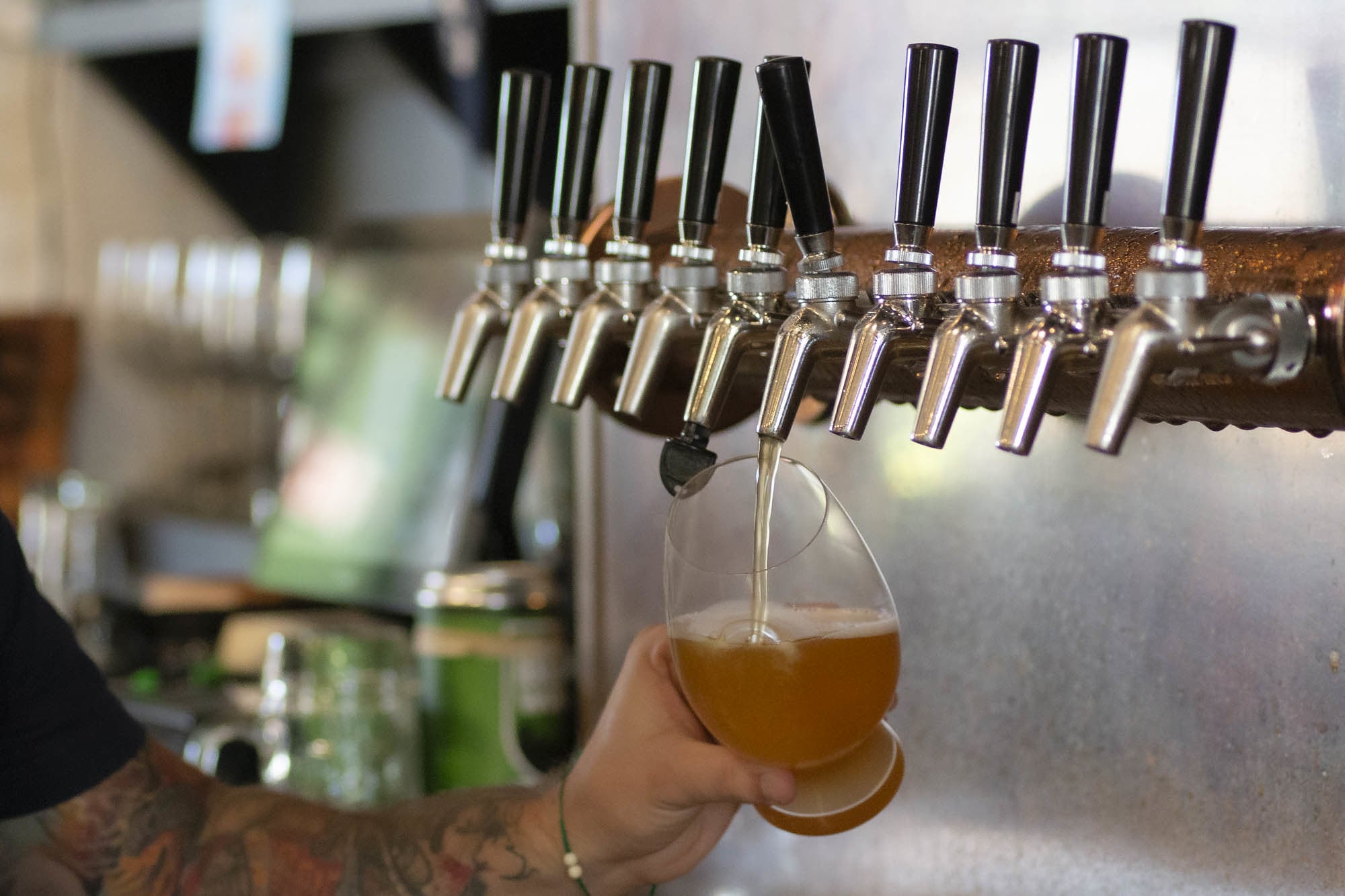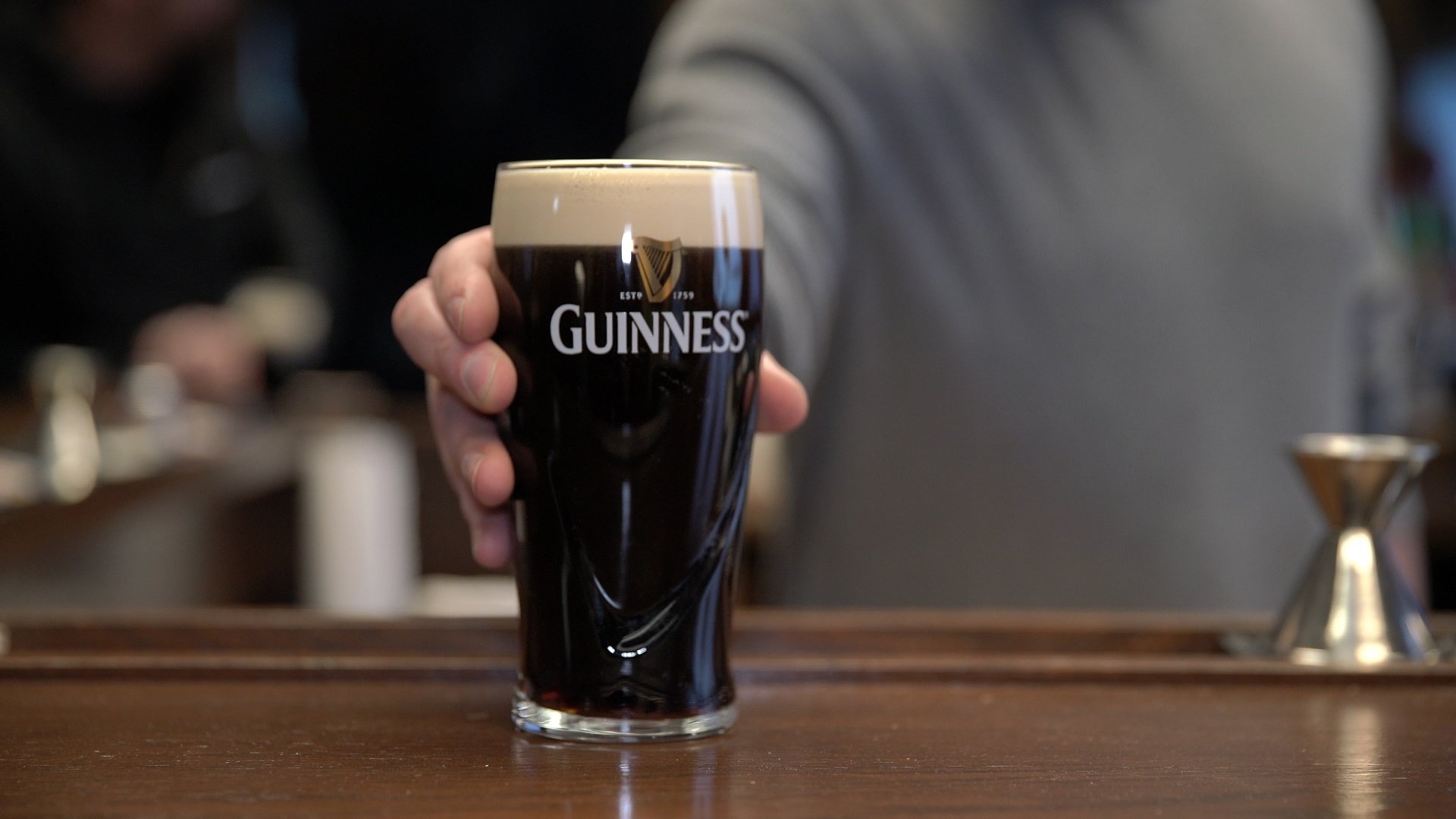
Thinking about buying one of those kegerators for sale you saw online? Let's review a few things before you click "add to cart."

The rise of craft beers and the homebrewing industry over the past two decades has made the kegerator a staple of man caves, backyard patios, and even kitchens in homes across America. It is the best way to enjoy draft beer from the comfort of your home (or if you’re lucky enough to work at a place like KegWorks, your office). More recently, other beverages have joined the on tap trend, making kegerators popular with more than just dads and guys with beards.
If you are looking to add a kegerator to your living space, then read on, and we will help guide you through some of the decisions you will have to make.
- What is a kegerator?
- How does a kegerator work?
- Why buy a kegerator?
- What kinds of kegerators are there?
- Can I build my own kegerator?
- Kegerator Buying Tips
- What else do I need with my kegerator?
- How do I clean my kegerator?
- What else can I serve with a kegerator?
What is a kegerator?
A kegerator is a refrigerator designed to store and dispense kegs of beer or other beverages. It is typically equipped with beer (or beverage) and air lines, an air (CO2 or Nitrogen beer gas) tank, a regulator, a draft beer tower, and a faucet. The beer keg is kept at a consistent temperature and carbonation level, allowing for a perfect pour every time. They can be used for either home or commercial use.
How does a kegerator work?

Kegerator Parts
- Tap Handle - The lever is pulled to open and close the faucet and control the beer flow. A great way to customize your kegerator, the tap handle can be changed out to match your personality or favorite kind of beer.
- Faucet - Typically made of stainless steel or chrome-plated brass, the draft faucet is where the beer is dispensed from the kegerator. It is attached to the draft tower.
- Draft Tower - The beer line travels from inside the kegerator cabinet into the draft tower, where it connects to the draft faucet. Beer towers are available in various styles and can hold multiple faucets.
- Guard Rail - Connected to the top of the kegerator cabinet, the guard rail prevents glassware stored on top of the kegerator from falling.
- Drip Tray - An area the glass sits on while being filled. Collects any spilled beer or drips from the faucet
- Draft Regulator - Regulators connect the CO2 or Nitrogen tank to the air line, and maintain and adjust the pressure level sent to the keg. Double gauge regulators (pictured) have a second gauge to monitor how much gas remains in the tank.
- Air Line - The vinyl air or gas line carries CO2 or Nitrogen beer gas from the tank to the keg coupler.
- Air Tank - Contains the gas used to dispense your beer. Either a CO2 tank or a nitrogen gas tank.
- Air Tank Holder - Holds the tank upright to prevent the tank from being damaged.
- Beer Line - Vinyl tubing transports the beer from the keg and coupler to the faucet.
- Keg Coupler - Connects the beer and air lines to the keg. Tapping a keg means connecting the coupler to the keg valve. Not every keg will be compatible with the standard coupler that comes with most kegerators. Read our Keg Coupler List to see which type of coupler matches the style of beer you want to pour.
The keg connects to the kegerator via a coupler (#11). An air line (#7) attached to the coupler pushes gas from the air tank (#8) into the keg, which draws beer from it. The beer travels out of the keg through the coupler into beer lines (#10), which travels up into a draft tower (#3) and connects to the faucet (#2), where the beer is dispensed. For more information about how a kegerator works, please see our guide on How to Set Up a Kegerator.
How many kegs fit in a kegerator?
Residential kegerators are typically designed to hold a half keg or 2 to 3 corny or sixtel kegs at a time, depending on the size of the refrigeration unit. Commercial kegerators vary widely in size and capacity but typically hold 1-5 half kegs and up to 12 corny or sixtels. Learn more about beer keg sizes and dimensions with our guide.
How long does a keg last in a kegerator?
Many factors determine how long a keg of beer will stay fresh. At a minimum, a keg will last about 6-8 weeks from the day it was filled as long as it is chilled properly. For more details, check out our guide on how long a keg will stay fresh.
How much does a kegerator weigh?
The weight of a kegerator depends on the manufacturer and the size of the unit. Standard kegerators designed to hold a single half keg can weigh about 80-120 lbs, while slim units weigh about 60-80 lbs. Please note that these weights are when the kegerator is empty. The weight will increase when it is holding a keg, which can add 55-160 lbs depending on the keg's capacity, as well as a steel gas tank and draft tower.
Why buy a kegerator?

Cost savings
One of the long-term benefits of owning a kegerator is the money you will eventually save. Buying a keg of beer is like buying just about any other item bulk, the cost per ounce or pint is less with a keg than buying a 6 or 12-pack. Ultimately, you end up paying for the kegerator with the money you saved from not buying packaged beer. We even saved you the trouble and did the math for you to show how a kegerator pays for itself.
No empties
Without buying cans and bottles of beer, you won’t have to return empties to the store or collect them for recycling. Your days of having a bag or box full of empty, sticky beer cans are over!
No leaving home for draft beer
The best part of owning a kegerator is being able to experience the joy of drinking a freshly poured pint of draft beer at home. No more driving to the bar down the street or paying for a cab or ride share to the local brewpub. Just you and your friends hanging out around your kegerator, having a good time.
Fresh beer on demand
Whether you are a craft beer geek, a homebrewing enthusiast, or you just like to drink an American light lager, you can enjoy them at home with just the pull of a tap handle. When properly chilled inside a kegerator, a keg will stay fresh for up to three months, so there’s no rush either.
What kinds of Kegerators are there?
When buying a kegerator, you’ll want to identify where you will use it. Is it going to be installed somewhere permanently, or do you need to move it around? Will your kegerator be used inside or outside where it could be exposed to rain or extreme temperatures? Depending on the answers to those questions, there are different kegerators to choose from. Download our Kegerator Comparison Chart for a detailed breakdown of the specifications of every unit.

Freestanding Kegerators
These are the most affordable and typical style of kegerator available. Freestanding kegerators are perfect for pouring beers in your basement, rec room, den, garage, and indoors. Most units come with casters on the bottom so they can be moved easily.
The one thing to remember with freestanding units is to leave enough room for proper ventilation. Warm air from the compressor is vented from the back of the unit. You want to leave an opening of 2 to 3 inches behind the kegerator so the air can escape. A kegerator that does not have proper ventilation will not last very long. These types of units should not be installed for countertop use.

Under Counter Kegerators
If you are adding a kegerator to your kitchen or home bar, a built-in kegerator is the way to go. Under counter kegerators have ventilation coming out the front of the unit, so they won’t overheat if the back side is covered or against a wall. The draft tower can be built into your countertop for a professional and seamless look.

Outdoor Kegerators
Serving draft beer on your backyard patio or pool deck requires a kegerator designed to withstand the elements. Outdoor kegerators have a rugged, stainless steel exterior to prevent rusting and a sealed back to protect the electrical components inside.

Multiple Tap Kegerators
Ideal for the craft beer fan or homebrew enthusiast that likes to have multiple beer styles on tap, multiple tap units feature two or more faucets. Multiple tap kegerators can hold anywhere from 2-4 ⅙ barrels (sixtels) or Corny homebrew kegs, depending on the make and model of the unit.

Commercial Kegerators
As the name indicates, these kegerators are designed for use in bars and restaurants and are also known as a direct draw units. Commercial kegerators have ample room to hold multiple ½ barrel kegs (full-size kegs) and extra room for additional cold storage of items. They are made from sturdy, commercial-grade materials that can withstand the wear and tear of constant use.
Do kegerators come with CO2?
Some kegerators do come with an empty CO2 tank depending on the model. Be sure to research if the one you want comes with or without a tank. The tank will be empty when it arrives because shipping them filled with gas is unsafe. A quick internet search should point you toward a place in your area that fills tanks.
Have more questions about CO2 and draft beer? We have a list of FAQs about CO2 to help you out.
Can I build my own Kegerator?
Have an old refrigerator in your garage or basement? Did your son or daughter bring their dorm room fridge back home after graduation? Grab yourself a kegerator conversion kit, and get to work. A DIY kegerator is an affordable way to have a draft beer tap in your home, especially if you are handy and have the right tools on hand. Just make sure your fridge is big enough to hold a keg.
You can find both door-mounted and tower kegerator conversion kits depending on the style of the fridge.
What is a keezer?
A keezer uses a chest freezer instead of a refrigerator to store, chill, and pour draft beer kegs. This is an excellent option if you want to have more than just one or two kegs on tap simultaneously. Check out our guide on how to build the ultimate keezer for more information.
Kegerator Buying Tips
Before selecting a kegerator, you must ensure you have proper space for it. Remember, this thing needs to hold a keg of beer. Most home kegerators are 3 to 4 ½ feet tall and 2 to 2 ½ feet wide and deep. Don’t forget to consider the room above for the draft tower and the room behind for the ventilation of freestanding units.
You will want to research to find out what size kegs of your favorite beers are available in your area. Some craft breweries only offer their beers in ⅙ barrels (sixtels). You can fit two sixtels in most single and multiple-tap kegerators. This way, you can keep a backup keg on hand for parties. Learn more about the different types of kegs with our guide to beer keg sizes.
The other thing to remember with kegs is what kind of coupler they need to connect to your kegerator. Most domestic beer kegs are compatible with the D-System Sankey coupler that comes standard with most kegerators. Imports and some craft beers require a different style coupler. Check out our keg coupler guide to see what kind of coupler you need.
Want to have Guinness on tap at home? A Guinness kegerator requires a nitrogen regulator, stout faucet and a U-System coupler. You can get a Guinness kegerator conversion kit to easily switch your kegerator over.
And, once again, REMEMBER THIS THING HOLDS A KEG OF BEER. You will have to carry that keg to wherever your kegerator is. Want a kegerator in your basement? That’s great, just know you’ll have to lug a keg down your basement stairs. You may want to get a keg cart or dolly to assist you in transportation.
What else do I need with my kegerator?

Depending on the kegerator you buy, you may need to pick up a few important components and kegerator accessories before you can tap that keg. Make sure you have the following:
Kegerator Components
Kegerator Accessories
- Economy Beer Line Cleaning Kit
- Beer Line Cleaning Keg
- Draft Tower Cover
- Draft Tower Cooler Fan
- Insulated Draft Tower Cover
- Glycol Pump Kit
- Kegtron Keg Monitoring System
- Faucet Lock
- Tap Soother Faucet Cap
How do I clean my kegerator?
A kegerator requires very little maintenance, but just like any other appliance in your home, you will want to keep it clean. This dispenses something you are going to drink, after all, and bacteria can develop on any surface beer comes into contact with. Use traditional cleaning agents to keep the outside and inside of the refrigerator unit clean. You should clean your beer lines every time you change your keg. Using a beer line cleaning kit is the easiest way to do this. This keeps bacteria from growing inside the lines and helps prevent sediment from building up that can cause foam. General maintenance, such as replacing beer lines and washers, is common.
What else can I serve with a kegerator?
Besides beer, you can serve several other types of beverages with a kegerator, including wine on tap, coffee, batched cocktails, and kombucha. Be sure to have the correct equipment before you give it a try. The most important part of using a kegerator to dispense the beverages mentioned above is that you will need to use barrier line instead of vinyl hose to prevent staining and flavor contamination and to use all stainless steel contacts, including the faucet, shank, connectors, and coupler. Each kind of beverage requires a specific gas type (nitrogen or CO2), pressure setting, and lines.
Buying a kegerator may seem hard, but once you sip that first pint, you'll know it was worth the investment. Then your biggest problem will be your thirsty friends and family wanting to come over for some.
Tags:

Dave Buchanan
Dave Buchanan has been the Content Writer for Kegworks since June 2019. He has a fondness for craft beer that developed while working for a local beer distributor. Dave also worked for an area sports talk radio station for several years, and continues his broadcasting work as a motorsports announcer and indoor lacrosse reporter.




Leave a Comment